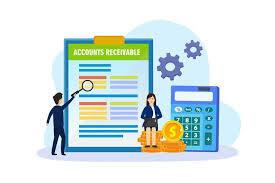Why Businesses With High Invoicing Volume Choose to Outsource A/R

Outsourcing accounts receivable (A/R) can be a smart, strategic move for businesses looking to improve cash flow, reduce overhead, and boost operational efficiency. But like any major shift in your business operations, it comes with risks — and how you approach it will determine whether it saves you time and money or causes costly mistakes.
This guide will walk you through how to outsource accounts receivable like a pro, sharing best practices to follow and pitfalls to avoid, so you can make the most of your decision.
✅ Why Businesses Are Outsourcing A/R in 2025
Before diving into how to do it right, it’s worth understanding why accounts receivable outsourcing is growing in popularity:
-
Cash Flow is King: More businesses recognize the importance of consistent, predictable cash flow — and timely collections are critical.
-
Increased Complexity: Managing invoices, follow-ups, disputes, and customer communications has become more demanding.
-
Labor Cost Pressures: Hiring, training, and retaining skilled A/R staff is expensive.
-
Automation Tools: Outsourcing firms now offer integrated tech platforms that improve accuracy and reduce manual work.
When done right, outsourcing A/R can lead to lower costs, faster payments, better reporting, and stronger customer relationships.
🔍 Step-by-Step: How to Outsource A/R Like a Pro
Here’s a clear, strategic roadmap to help you succeed:
1. Define Your Goals and Needs
Before choosing a partner, ask yourself:
-
Do you need full-service A/R outsourcing or just help with collections?
-
Are you looking to reduce DSO (Days Sales Outstanding)?
-
Is your priority improving cash flow, reporting, or customer experience?
Clarity on your objectives will help you find the right provider and avoid misalignment later on.
2. Choose the Right Outsourcing Partner
Not all A/R outsourcing providers are equal. Look for partners that:
-
Understand your industry and business model
-
Use automation and cloud-based systems
-
Offer customizable service packages (not one-size-fits-all)
-
Have proven results and strong client references
Ask about their experience, team qualifications, customer service policies, and how they manage disputes.
Pro Tip: Interview multiple providers and request a pilot project or short-term trial before committing long-term.
3. Set Up the Right Tools and Integrations
A modern A/R process relies on integration between systems. Ensure the provider can work with your existing tools, such as:
-
Accounting software (QuickBooks, Xero, NetSuite, etc.)
-
Payment processors (Stripe, PayPal, bank gateways)
-
CRM systems (HubSpot, Salesforce)
A good partner will streamline the entire process, from invoice generation to payment collection, while keeping your data centralized and secure.
4. Develop a Clear Scope of Work
Avoid vague agreements. Define in writing:
-
Who creates and sends invoices?
-
How and when payment reminders go out
-
Escalation rules for late payments
-
Policies for dispute resolution
-
Reporting frequency and format
-
Service-level expectations (SLAs)
The more clearly defined the scope, the fewer surprises later.
5. Train the Provider on Your Brand and Tone
Remember, your A/R provider interacts directly with your customers. It’s essential they reflect your brand voice and customer service standards.
Provide them with:
-
Sample communications
-
Brand guidelines
-
FAQs
-
Common customer objections and how you’d like them handled
Pro Tip: Monitor communications early on to ensure the tone aligns with your customer expectations.
6. Monitor Performance with Metrics That Matter
Track KPIs such as:
-
DSO (Days Sales Outstanding)
-
Collection rates
-
Customer satisfaction
-
Error rates
-
Invoice delivery time
Schedule regular review meetings with your provider to go over reports and address issues proactively.
⚠️ Common Pitfalls to Avoid
While outsourcing A/R has big benefits, these common mistakes can lead to frustration and lost revenue:
❌ 1. Assuming “Set It and Forget It”
Many businesses think outsourcing means they can walk away from the A/R process entirely. That’s not the case.
You still need to:
-
Provide timely data (e.g., customer details, invoice approvals)
-
Review reports
-
Make strategic decisions based on A/R insights
Outsourcing is not abdicating responsibility — it’s delegating execution.
❌ 2. Choosing the Cheapest Option
It’s tempting to go with the lowest bidder, but in A/R, you get what you pay for. Low-cost providers may:
-
Use poor customer service practices
-
Have slower response times
-
Miss key compliance standards
Look for value, not just low cost.
❌ 3. Lack of Communication
If you and your provider don’t communicate regularly, problems will go unnoticed. Set up:
-
A designated point of contact
-
A communication channel (Slack, email, Zoom)
-
Weekly or bi-weekly check-ins
❌ 4. Not Protecting Customer Data
A/R providers handle sensitive financial information. Make sure:
-
Data security practices are in place (e.g., encryption, access control)
-
They comply with relevant standards (GDPR, SOC 2, etc.)
-
A formal non-disclosure agreement (NDA) is signed
❌ 5. Failing to Align A/R Process with Sales and Customer Service
When your outsourced A/R team isn’t aligned with sales or support, it creates friction. For example:
-
Sales might promise flexible payment terms, but A/R doesn’t honor them.
-
A customer might be upset about a service issue but still gets a collection notice.
Solution: Create a cross-functional feedback loop between departments and your A/R partner.
💼 Who Benefits Most from A/R Outsourcing?
Outsourcing A/R works especially well for:
-
Growing businesses that don’t want to scale admin staff
-
Startups with lean teams but steady invoice volume
-
Service-based companies with recurring billing cycles
-
Businesses with aging receivables or DSO issues
If you're spending too much time chasing payments — or your cash flow always feels tight — it might be time to outsource.
📌 Final Thoughts
Accounts receivable outsourcing can dramatically improve your business's cash flow, reduce administrative headaches, and allow your team to focus on higher-value work — but only if done correctly.
By setting clear goals, choosing the right partner, aligning tools and processes, and staying engaged, you can outsource A/R like a pro and avoid the common traps that derail so many businesses.
In 2025, efficiency isn’t just a goal — it’s a competitive advantage. Don’t let your receivables hold you back.







